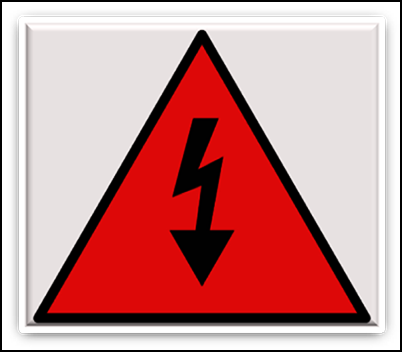-
What happened?
A crewman was doing electrical work on a 440v power distribution panel (PDP).
He was using cable ties to fix loose cables within the panel and observed a loose earth bonding cable in poor condition.
He made up a new earth cable from 6mm wire.
Whilst attempting to re-connect the earth bonding cable, the loose trailing end of the cable came into contact with the 440VAC bus bar.
A short circuit between the 440VAC and the earth bonding cable caused an arc flash.
At the time, the worker reported the incident to his manager. No injuries or damages were reported.
Subsequently, the worker reported receiving blistering on his hands and partial thickness burns on his face. He was assigned light duties for two weeks.

-
Why did it happen?
The worker deliberately ignored safety protocols in what was considered an easy and straightforward task.
Making up the earth bonding cable was not in the original scope of work. It was not discussed with the supervisor and was carried out without a risk assessment or permit to work (PTW).
The panel had inadequate insulation of terminals (which remained live when panel was opened).
A generic toolbox talk (TBT) was completed. The risk of unauthorised access to the distribution panel had not been properly assessed.
Inadequate supervision for compliance with electrical safety control measures.
The incident was not reported in a correct or timely way, which led to the injured person not having access to immediate medical attention.

-
What did they learn?
Access to electrical cabinets should be restricted.
An electrical safety audit should be conducted before electrical works commence.
Review the risk assessments. If any additional hazards are identified, include mitigations for those hazards.
Ensure crews’ incident reporting and investigation training is complete and up to date.

-
Ask yourself or your crew
What pre-start up checks do you do before starting work on electrical systems? Is there anything else you should do?
How do you know that equipment is isolated?
What should you do if the scope of work changes while performing electrical work?
Have you ever had to work on a different task to that you were originally intended? Why?
Do the risk assessments accurately cover all the tasks you carry out? What should you do if not?

Add to homescreen
Content name
Select existing category:
Content name
New collection
Edit collection
What happened?
A crewman was doing electrical work on a 440v power distribution panel (PDP).
He was using cable ties to fix loose cables within the panel and observed a loose earth bonding cable in poor condition.
He made up a new earth cable from 6mm wire.
Whilst attempting to re-connect the earth bonding cable, the loose trailing end of the cable came into contact with the 440VAC bus bar.
A short circuit between the 440VAC and the earth bonding cable caused an arc flash.
At the time, the worker reported the incident to his manager. No injuries or damages were reported.
Subsequently, the worker reported receiving blistering on his hands and partial thickness burns on his face. He was assigned light duties for two weeks.
Why did it happen?
The worker deliberately ignored safety protocols in what was considered an easy and straightforward task.
Making up the earth bonding cable was not in the original scope of work. It was not discussed with the supervisor and was carried out without a risk assessment or permit to work (PTW).
The panel had inadequate insulation of terminals (which remained live when panel was opened).
A generic toolbox talk (TBT) was completed. The risk of unauthorised access to the distribution panel had not been properly assessed.
Inadequate supervision for compliance with electrical safety control measures.
The incident was not reported in a correct or timely way, which led to the injured person not having access to immediate medical attention.

What did they learn?
Access to electrical cabinets should be restricted.
An electrical safety audit should be conducted before electrical works commence.
Review the risk assessments. If any additional hazards are identified, include mitigations for those hazards.
Ensure crews’ incident reporting and investigation training is complete and up to date.
Ask yourself or your crew
What pre-start up checks do you do before starting work on electrical systems? Is there anything else you should do?
How do you know that equipment is isolated?
What should you do if the scope of work changes while performing electrical work?
Have you ever had to work on a different task to that you were originally intended? Why?
Do the risk assessments accurately cover all the tasks you carry out? What should you do if not?
A crewman was doing electrical work on a power distribution panel (PDP), when a loose earth bonding cable made contact with a live 440v bus bar, causing a short circuit and an arc flash. The worker reported receiving blistering on his hands and partial thickness burns on his face. He was assigned light duties for two weeks.













